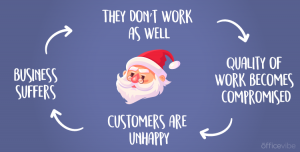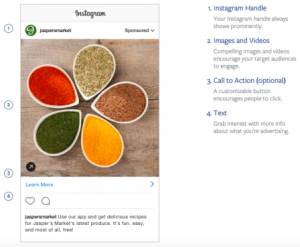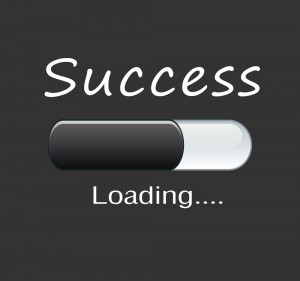— November 9, 2018

3dman_eu / Pixabay
When I first started my business, I wasn’t sure how much to charge. Even when I figured out my pricing structure, when it came to putting it on paper, I was always nervous it was going to be too much. I didn’t know my value – and worse – my clients didn’t know either.
It was a few years into a certain client’s event that I decided that the value I brought to the table was not being rewarded. It was my own fault, but I was charging way too little because I just wanted to “get the business” and I was afraid of claiming what I really thought I deserved. It was a tough time in my company – trying to take LKE from a side business to a serious FT business – and part of that transition was learning to charge what I believed I was worth (and building a business that reflected that value). I ended up raising my prices 4X that year and it has been a more successful business ever since.
I don’t get every client, but I do get the ones that are perfect for me. This is important – and the process to get here was long, but worth every second. Here are a few tips I have if you’re looking to change the perception of your business, uplevel and see exponential growth!
1. TAKE YOURSELF SERIOUSLY AS A BUSINESS
The first step in getting other people to respect you as a legit planner who is worth paying for – is to take yourself seriously. This isn’t a side business. It’s not a hobby. If you want to make a full-time income, you’ve got to make this your biggest priority. I’ve found that focusing on your planning as a serious business does a few things.
(1) It helps you believe that you bring something very special and unique to the table. You know how hard you work and you want to be paid accordingly.
(2) Your activity is evident to all those around you – they take you more seriously, expect to spend more money and determine that they want to work with you for a specific value you bring to the table.
If you’re working with a full-time effort and want to command higher revenue, you’ve got to make it look legitimate. This would include spending your time on:
- Branding yourself as a high-class planner. This mandates that you focus on your BRILLIANCE and brand yourself accordingly. Yes – choosing a niche is important!
- A strong marketing plan. If you’re spending hours and hours working on your business, some of that time should be on strong social media posts, an updated website, updated LinkedIn profile and a strong marketing plan.
- A defined, well-branded proposal process. What do your prospective clients receive from you the second they’re interested? What is your proposal process and how does it speak to your ideal target clients? If it’s giving away too much up front or not communicating your value, you’re going to lose more potential clients than you could ever find.
In short, when everything you do looks like a successful business that provides a unique value to a specific target audience, you’re on the right path!
2. CHARGE ETHICALLY AND APPROPRIATELY
It’s not fair to our clients, or to ourselves, to make pricing a guessing game. The price of the day shouldn’t be based on how you feel or how rich your client is. At the end of the day, you’re selling a service that has an associated price. You’re an event planner and that means you’re involved in various aspects of throwing an event. Maybe you’re more on the management side or full production, but you should know your service listings.
In determining how to charge, I’ve found a few pricing models that exist in our industry. Some do one way, others make a hybrid version, and still others make it up as they go along. Here are 3 popular pricing models I’ve seen and my opinions on each.
- A PERCENTAGE OF THE BUDGET
This model is simple – planners who charge this way take a % of their total budget. So let’s say your client has a $ 100,000 budget and you take 20%, you get paid $ 20,000 (Look ma, I just did math!).This is very straightforward, but not my favorite way to charge because it has no reflection on the work you will need to do. Let’s say the client’s budget is $ 100,000, but they want you to manage 100 speakers. They may not be paying these speakers so it’s doesn’t factor into their budget, but managing 100 speakers is a HUGE, time-consuming task. You’ve really got to make sure your % is fair if you’re using this model. - A FLAT FEE
I’ll be honest – I’m not 100% sure how people figure this model out (which is why I don’t do it), but the general concept is that there is a flat fee. For example – on-site wedding management is $ 2,500 and full wedding management is $ 5,000. I’m guessing this is based on average workload, but I also have a feeling this changes frequently based on the whim of the day – and the projected “budget” of the client. - A PROJECT FEE BASED ON PROJECTED # OF HOURS
This is the model I love the most, and it’s what I use for all of our clients. I lay out a very specific scope of work. Like -VERY specific – and then use that to determine how many hours I think I will have to spend. Of course, I also include staff time as well. This estimation of hours is then multiplied by my hourly rate and then given as a flat fee. So – if I end up spending more time than I thought, that’s my fault. My clients don’t pay more. If I spend less time (which RARELY happens), I still get paid the same flat fee. But – I do reduce for the client the next time around to make sure it’s in line with reality so they aren’t overpaying.The reason I love this model so much is that it’s a direct reflection of the work. If I give a proposal for $ 40,000 and my client can only afford $ 10,000, I can still take the contract by reducing the scope and lessening my fee. I know how much work I’ll need to do, and reducing my fee and scope allows me to take on other clients. It’s also much more transparent to the client as they know they’re being charged only for work I’m doing. It helps me when the client’s budget is lower than my proposal – I don’t just have to do all the same work for the same price.
Now just because the third model is my favorite, doesn’t mean it’s the only right answer. You have to find a solution that you feel comfortable with. The main goal here is to decide on a pricing model – make it clear to your clients – and stick with it. If you know HOW you charge, you can then determine HOW MUCH!
3. STICK TO YOUR GUNS
If we want our clients to take us seriously, we have to take ourselves seriously. And the biggest way we do that is sticking to our pricing strategy. Once you’ve done the two things above, you’re really sure that you deliver great value to your clients. You’re also clear on HOW you price your services and HOW MUCH makes sense for each project. Once you’ve established this – you come to the hardest part of all – sticking to your guns.
Remember that story I told in the beginning about raising my prices by 4X? Well the first time I did that, I lost the client. They couldn’t understand why I had to raise my prices so much and they didn’t value the work that I brought to the table. It was a hard loss and I really had to push through a lot of doubt and uncertainty about this new pricing strategy. But you know what? After 2 years, that same client came back and paid the 4X amount. They had hired other companies and didn’t get the same quality – and when they came back – they knew why I was worth every penny.
I know this is easier to say than to do, but when you truly believe in the value you bring to the table, you take yourself seriously, and you have a smart pricing strategy – you will find that the right clients are the ones who will pay you. You’ll have to let the ones who don’t see your value fall away. You’ll lose some business. You might even lose some of your best current customers.
But you’re also opening the doors to a whole new ballgame.
When you brand yourself and price accordingly, you open up all new doors.
- Clients who love you and will pay top dollar to work with you.
- New revenue opportunities from thought leadership.
- No more justifying your value every step of the way and arguing with clients who don’t have clear expectations.
- Getting paid WELL for work you LOVE to do.
It may not be easy, which is why many people don’t do it, but those who take the time to walk this path will be some of the most powerful event hustlers in the business!
—————————————
This may be one of the largest articles I’ve ever written, but raising your prices is not a simple task. It’s a lot of work and there are a lot of nuances. I found out (the hard way) that much of this takes support from people who have been there before.
Business & Finance Articles on Business 2 Community
(100)
Report Post






